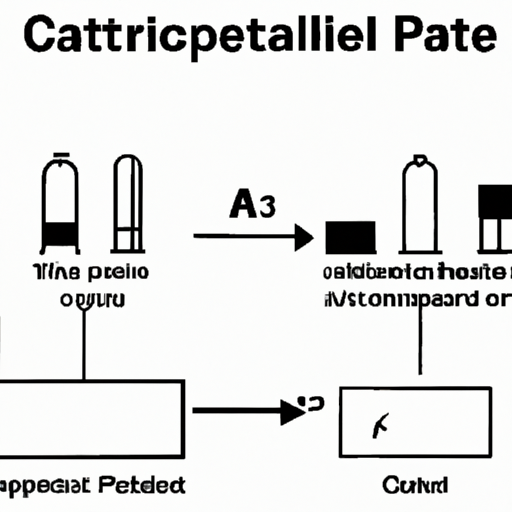The Role of Products with the Capacitor Symbol in Practical Applications
I. Introduction
Capacitors are fundamental components in electronic circuits, playing a crucial role in the functionality and efficiency of various devices. Defined as passive electrical components that store and release electrical energy, capacitors are essential in managing voltage and current in circuits. This blog post will explore the importance of capacitors in practical applications, highlighting their various types, functions, and the challenges they face in modern technology.
II. Understanding Capacitors
A. Basic Principles of Capacitance
Capacitance is the ability of a component to store an electrical charge. It is measured in farads (F), with one farad representing a capacitor that can store one coulomb of charge at one volt. Capacitors consist of two conductive plates separated by an insulating material, known as a dielectric. When voltage is applied across the plates, an electric field forms, allowing the capacitor to store energy. When the voltage is removed, the capacitor can release this stored energy back into the circuit.
B. Types of Capacitors
There are several types of capacitors, each with unique characteristics and applications:
1. **Electrolytic Capacitors**: Known for their high capacitance values, these capacitors are polarized and typically used in power supply circuits.
2. **Ceramic Capacitors**: These non-polarized capacitors are widely used for their stability and reliability in high-frequency applications.
3. **Film Capacitors**: Made from thin plastic films, these capacitors are known for their low loss and high voltage ratings, making them suitable for audio and power applications.
4. **Tantalum Capacitors**: These capacitors offer high capacitance in a small package and are often used in compact electronic devices.
5. **Supercapacitors**: Also known as ultracapacitors, these devices can store large amounts of energy and are used in applications requiring rapid charge and discharge cycles.
III. Key Functions of Capacitors in Circuits
A. Energy Storage
Capacitors play a vital role in energy storage, particularly in power supply circuits. They can smooth out voltage fluctuations, ensuring a stable power supply to sensitive components. In renewable energy systems, such as solar panels and wind turbines, capacitors store excess energy generated during peak production times, releasing it when demand is high.
B. Filtering
Capacitors are essential in filtering applications, where they help to smooth voltage fluctuations in power supplies. By acting as a buffer, they reduce noise and ripple, ensuring a clean and stable output. In audio and communication systems, capacitors filter out unwanted frequencies, enhancing sound quality and signal clarity.
C. Timing and Oscillation
Capacitors are integral to timing and oscillation circuits. In RC (resistor-capacitor) timing circuits, they determine the timing intervals for various applications, such as in timers and clocks. Additionally, capacitors are used in oscillators and signal generators, where they help produce specific frequencies for radio and communication devices.
D. Coupling and Decoupling
In amplifiers, capacitors are used for signal coupling, allowing AC signals to pass while blocking DC components. This ensures that the amplifier operates efficiently without distortion. Conversely, decoupling capacitors stabilize power supply lines by filtering out high-frequency noise, protecting sensitive components from voltage spikes.
IV. Practical Applications of Capacitors
A. Consumer Electronics
Capacitors are ubiquitous in consumer electronics, playing a crucial role in devices such as smartphones, tablets, and laptops. They help manage power supply stability, enhance audio quality, and improve overall performance. In audio equipment, capacitors filter and couple signals, ensuring clear sound reproduction.
B. Industrial Applications
In industrial settings, capacitors are used in motor drives and power inverters, where they help manage energy flow and improve efficiency. They are also essential in automation and control systems, where they ensure reliable operation of sensors and actuators.
C. Automotive Applications
The automotive industry has seen a significant increase in the use of capacitors, particularly in electric vehicles (EVs). Capacitors store energy for quick acceleration and regenerative braking, enhancing overall vehicle performance. Additionally, they play a vital role in automotive electronics and safety systems, ensuring reliable operation of critical components.
D. Renewable Energy Systems
Capacitors are increasingly important in renewable energy systems, such as solar inverters and energy storage systems for wind and hydroelectric power. They help manage energy flow, store excess energy, and ensure a stable output, contributing to the overall efficiency of these systems.
V. Challenges and Considerations
A. Limitations of Capacitors
Despite their many advantages, capacitors have limitations. Voltage ratings are critical, as exceeding these ratings can lead to breakdown and failure. Additionally, capacitors are sensitive to temperature changes, which can affect their performance and lifespan.
B. Environmental Considerations
The disposal and recycling of capacitors pose environmental challenges. Many capacitors contain hazardous materials, and improper disposal can lead to environmental contamination. The manufacturing process of capacitors also has an impact on the environment, necessitating sustainable practices in production and disposal.
VI. Future Trends in Capacitor Technology
A. Advancements in Materials and Design
The future of capacitor technology looks promising, with advancements in materials and design leading to higher-capacity and more efficient capacitors. Researchers are exploring new dielectric materials that can enhance performance and reduce size, making capacitors more versatile for various applications.
B. Integration with Other Technologies
Capacitors are increasingly being integrated with other technologies, such as hybrid energy systems that combine renewable energy sources with traditional power generation. They also play a crucial role in the Internet of Things (IoT) and smart devices, where they help manage power consumption and enhance device performance.
VII. Conclusion
In conclusion, capacitors are indispensable components in modern electronics, playing a vital role in energy storage, filtering, timing, and signal processing. Their applications span consumer electronics, industrial systems, automotive technology, and renewable energy solutions. As technology continues to evolve, capacitors will remain at the forefront, driving innovation and efficiency in various fields. Understanding the significance of capacitors is essential for anyone involved in electronics, as they are key to the functionality and reliability of countless devices we rely on every day. The future of capacitor technology promises exciting advancements that will further enhance their role in shaping the electronic landscape.






